
Marquess of Anglesey is a title in the Peerage of the United Kingdom. It was created in 1815 for Henry Paget, 2nd Earl of Uxbridge, a hero of the Battle of Waterloo, second in command to the Duke of Wellington. The Marquess holds the subsidiary titles of Earl of Uxbridge, in the County of Middlesex, in the Peerage of Great Britain (1784), Baron Paget, de Beaudesert, in the Peerage of England (1553), and is also an Irish Baronet, of Plas Newydd in the County of Anglesey and of Mount Bagenall in the County of Louth.

Earl of Chichester is a title that has been created three times in British history. The current title was created in 1801 for Thomas Pelham, 2nd Baron Pelham of Stanmer in the Peerage of the United Kingdom.

Earl of Strafford is a title that has been created three times in English and British history.
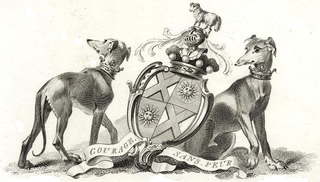
Viscount Gage, of Castle Island in the County of Kerry of the Kingdom of Ireland, is a title in the Peerage of Ireland. It was created in 1720 for Thomas Gage, along with the subsidiary title of Baron Gage, of Castlebar in the County of Mayo, also in the Peerage of Ireland. In 1744 he also succeeded his cousin as eighth Baronet, of Firle Place. The titles remain united. The Gage family descends from John Gage, who was created a baronet, of Firle Place in the County of Sussex, in the Baronetage of England on 26 March 1622. His great-grandson, the seventh Baronet, represented Seaford in Parliament. He was succeeded by his first cousin, Thomas Gage, 1st Viscount Gage, the eighth Baronet. He sat as a Member of Parliament for Minehead and Tewkesbury and also served as Governor of Barbados. In 1720, 24 years before succeeding in the baronetcy, he was raised to the Peerage of Ireland as Baron Gage and Viscount Gage. His second son was the military commander the Hon. Thomas Gage.

There have been seven baronetcies created for members of the Lowther family, one in the Baronetage of Nova Scotia, two in the Baronetage of England, two in the Baronetage of Great Britain and two in the Baronetage of the United Kingdom. Two of the creations are extant as of 2008.
There has been one creation of baronets with the surname Delves.
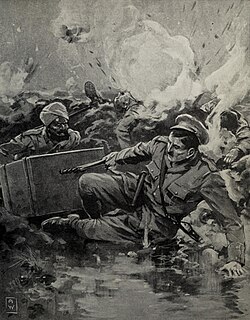
There have been six baronetcies created for persons with the surname Smyth, two in the Baronetage of England, one in the Baronetage of Great Britain, one in the Baronetage of Ireland and two in the Baronetage of the United Kingdom. One creation is extant as of 2010.
There have been nineteen baronetcies created for persons with the surname Hamilton, eight in the Baronetage of Nova Scotia, one in the Baronetage of England, five in the Baronetage of Ireland, one in the Baronetage of Great Britain and four in the Baronetage of the United Kingdom. As of 2008 two creations are extant, two are dormant, two are either extinct or dormant and twelve extinct.
There have been four baronetcies created for members of the Astley family, three in the Baronetage of England and one in the Baronetage of the United Kingdom. Only one creation is extant as of 2008. The Astley family were descended from Sir Thomas de Astley of Astley, Warwickshire, who was killed in the Battle of Evesham in 1265. He married twice. From his first marriage to Joane de Blois descended the Astley baronets of Patshull, whose family seat was at Patshull Hall, Staffordshire, and the Astley baronets of Everley, Wiltshire. From his second marriage to Editha Constable of Melton Constable, Norfolk, descended the Astley baronets of Melton Constable, the Astley baronets of Hillmorton, and the Barons Astley of Reading.
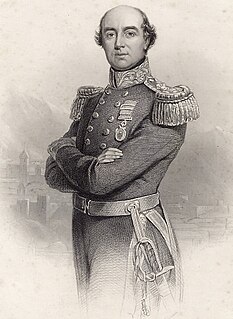
There have been twenty baronetcies created for persons with the surname Williams, eight in the Baronetage of England, three in the Baronetage of Great Britain and nine in the Baronetage of the United Kingdom. Only five of the creations are extant as of 2017..
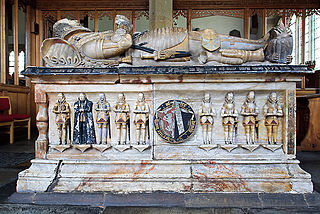
There have been two baronetcies created for members of the Salusbury family, the first in the Baronetage of England and the second in the Baronetage of Great Britain. Neither title has survived to the present day although the senior baronetcy is technically considered to be dormant.
There have been three baronetcies created in the Baronetage of England for members of the Skipwith family of Skipwith, Yorkshire, which relocated to Lincolnshire in the 14th century. They were a successful court family, with one member, Margaret Skipwith, seen as a possible queen of England after the death of Henry VIII's third wife, Jane Seymour. One creation of the baronetcy is extant as of 2008.
There have been three baronetcies created for persons with the surname Cooke, two in the Baronetage of England and one in the Baronetage of Ireland. One creation is extant as of 2013.
The Baronetcy of Goodricke of Ribston was created in the Baronetage of England by King Charles I on 14 August 1641 for his loyal supporter John Goodricke of Ribston, Yorkshire. He represented Yorkshire in the Cavalier Parliament from 1661 to his death.
There have been two baronetcies created in the Baronetage of England for members of the Culpeper family of Kent and Sussex. Both are extinct.
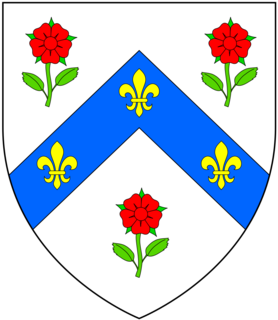
There have been four baronetcies created for persons with the surname Cope.
There have been two baronetcies held by people with the surname Lamb, both in the Baronetage of Great Britain. Both creations are extinct.
There have been two baronetcies created for members of the Barnardiston family, both in the Baronetage of England. Both creations are extinct.

The de Beaumont-Spain Baronetcy, of Willingale in the County of Essex, England, is a title in the Baronetage of the United Kingdom. It was created in 1723 for Henry de Beaumont, with remainder, failing heirs male of his own, to the heirs male of his father.
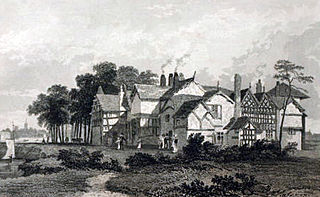
Sir John Bland, 5th Baronet of Kippax Park, Yorkshire and Hulme Hall, Lancashire, was a British landowner and politician who sat in the House of Commons from 1713 to 1727.












